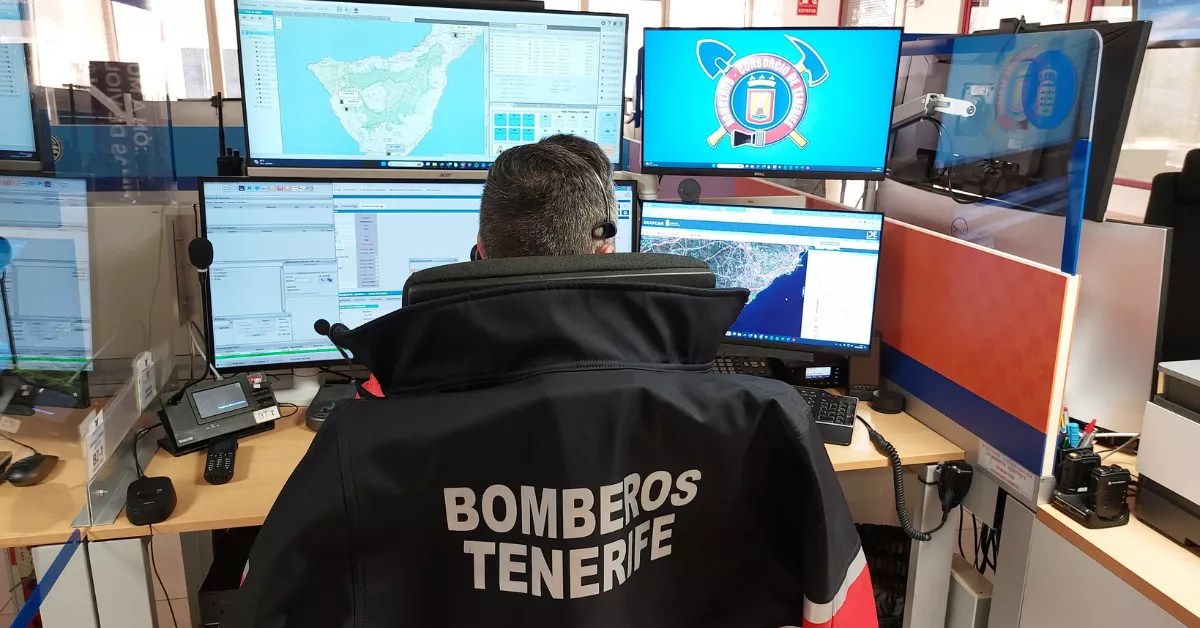Tenerife already has in place at different levels of execution the five major works that aim to eliminate wastewater discharges on the Island. The president of the Cabildo, Peter Martin, takes stock of the first two years of work framed in a historic agreement with the state. It ensures that “eight out of ten euros of the planned investment are already awarded or running.” Martín points out that “once and for all a door has been opened to solve this serious and recurring problem, that of treatment and purification.” The objective is to “reduce the environmental impact and also provide agriculture with excellent quality irrigation water.”
The agreement signed between the Cabildo de Tenerife, through the Island Water Council of Tenerife (Ciatf), and the state-owned company Aguas de las Cuencas de España (Acuaes), of the Ministry for the Ecological Transition and the Demographic Challenge, defines the execution of five major systems for improving the sanitation and wastewater treatment that are generated on the island.
More than 153 of the 200 million euros available for the project have already been awarded, which means that, as the island president assures, more than eight out of every ten euros of those planned for these works have already been executed. Some works that will come to solve the historical problem of the wastewater discharges into the sea.
Martín adds that these large systems “will result in the elimination of discharges into the sea but also into the subsoil, magnificent news because it opens another door to purification on the Island, based on sustainability ». One more positive factor of this project is that it will provide agriculture with a new and powerful resource from reclaimed water, as is currently being done in Valle de Guerra.
“In critical condition”
Pedro Martín reiterates that “the treatment of wastewater on the Island was in a critical state, something that could not be allowed in any way and on which we have focused during these four years.” The president stresses that the implementation of the agreement with Acuaes “has given a real boost to that objective, because Tenerife cannot afford to continue being penalized by the European Union, as was the case up to now, for not having a politics of purification of the waters according to the present times».
“Four years ago we found ourselves in a desolate panorama” -Martín assesses-. He explains that it was made up of works without a project, obsolete installations, filtering grids and antiquated tubes.
The insular government has set in motion “at once, not in a speech but in reality,” he points out, with the shovels and constructions a network “that in a few years will give a real oxygen balloon to the Island.” He concludes: “Tenerife was plunged into a catastrophic situation in terms of water treatment.”
huge effort
For his part, the councilor of the Cabildo de Desarrollo Sostenible y Lucha Contra el Cambio Climático, Javier Rodríguez Medina, highlighted the important effort that the Island Water Council and the Cabildo, in general, are making to launch a real plan that attends to the solution for sewage, transforming and regenerating them.
It is committed to its agricultural use and to ending the dumping of polluted water into the sea. Rodríguez Medina remarks: “The pieces of this important and decisive project are being completed to ensure that Tenerife has a water purification system in accordance with the population and current characteristics.” He also highlights the enormous effort from the Insular Water Council and the Cabildo to implement a real plan that attends to theto wastewater generation, “transforming and regenerating them for agricultural use and ceasing to dump polluted water into the sea.”
works in progress
Among the latest advances in the agreement with Acuaes, the commissioning of works of the Arona-San Miguel system, the largest project included in this agreement. Work is already underway on four collectors and drives that will send the flow of wastewater from the region to the future treatment plant that will be located in Arona, according to the area councilor. There will be two in the municipality of Arona and two in San Miguel de Abona. They will cost just over forty million euros and completion is scheduled for May 2024.
As for the treatment plant of this system, the works have not yet started because it is waiting for the necessary archaeological studies for its start. In this new plant, which will begin shortly, “more than 22 million euros will be invested, and once the works begin, it is expected to be completed in 30 months,” Rodríguez Medina points out.
For the rest, the agreement with Acuaes also contemplates the future systems of Acentejo, Valle de La Orotava, Granadilla and Oeste, all of them with works that are currently underway.
220 million until 2024
Tenerife will promote the strategy to end wastewater discharges through a state and island investment of 220 million euros until 2024 in purification and regeneration. This will mean going from 40% of the wastewater that was treated in 2019 to purifying more than 80% of that generated on the Island. The largest agreement in the history of the Cabildo on the matter, formalized with Acuaes, will inject more than 170 million euros , 85 contributed by the insular corporation to improve and start up infrastructures that fix a historical problem in Tenerife. To this are added another 30 of State investment in the Santa Cruz treatment plant, in addition to almost 20 of the Cabildo for the urban and industrial works of Valle de Güímar (12.7 and 6.9 million, respectively); that of Fasnia, (1.1), 1.5 invested in the WWTP of La Campana and the six that the Polígono de Granadilla will allocate to the start-up of its treatment plant.















